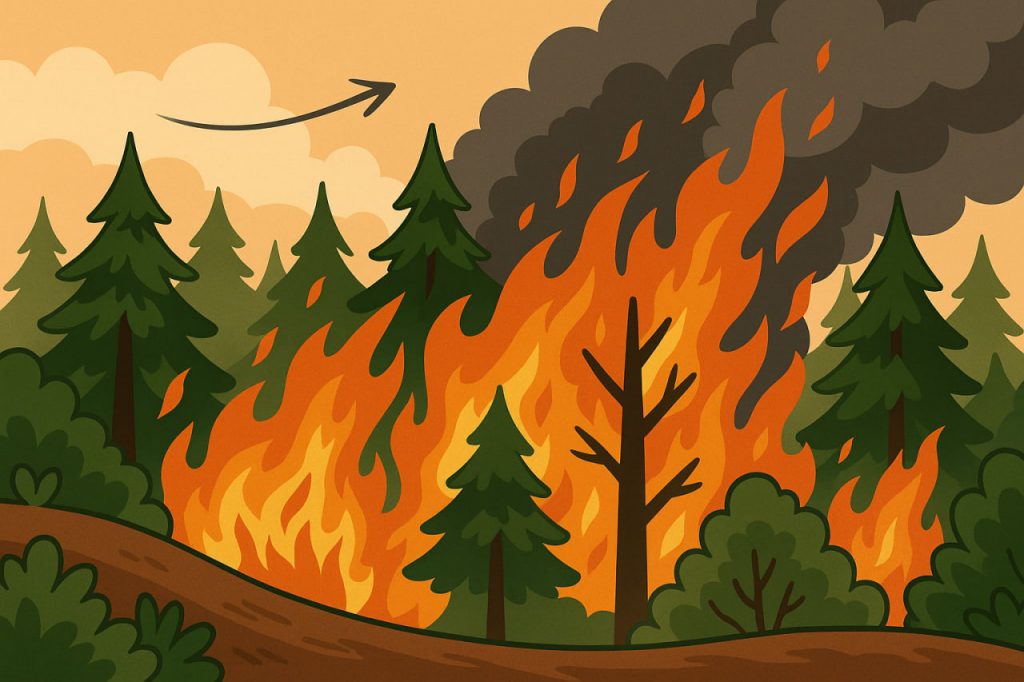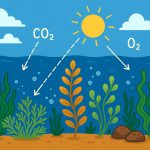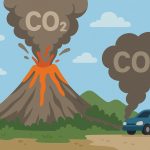Wildfires are powerful and fast-moving natural events that can devastate entire landscapes within hours. While fire is a natural part of many ecosystems, climate change and human activity have increased both the frequency and intensity of these events. Understanding how wildfires start, spread, and impact forests is critical for predicting risk, managing forests, and minimizing destruction.
Causes of Wildfires
Wildfires can be ignited by natural causes, such as lightning strikes, or by human activity, including unattended campfires, discarded cigarettes, arson, or sparks from machinery. In dry and hot conditions, even a small ignition source can trigger a large fire.
The presence of dry vegetation, high temperatures, and low humidity create the ideal environment for a fire to start. In some ecosystems, such as coniferous forests and savannas, fire is even a regular part of the natural cycle, helping to clear undergrowth and release seeds.
The Fire Triangle: Heat, Fuel, and Oxygen
For any fire to ignite and continue burning, three elements are required: heat, fuel, and oxygen. This is known as the fire triangle. In a forest, the fuel includes dried leaves, pine needles, grasses, shrubs, and tree bark.
Once ignited, fire consumes this fuel, while wind brings in oxygen and fans the flames. High winds can carry burning embers over long distances, allowing the fire to leap across roads, rivers, or firebreaks. This makes wildfires especially unpredictable and dangerous.
How Wildfires Spread
Wildfires spread in multiple ways: through direct flame contact, radiant heat, and airborne embers. Fires generally move faster uphill than downhill, as hot air rises and preheats the vegetation above the flames. Steep terrain, dense forests, and dry weather accelerate fire movement.
The front edge of a wildfire, known as the fire front, is the most intense. Behind it, smoldering areas may continue burning for hours or days. If the wind shifts, new fronts can form rapidly, trapping people and wildlife in dangerous situations.
Impact on Ecosystems
Although often destructive, wildfires can also play an essential role in certain ecosystems. Some plants, such as fire-adapted species, rely on fire to open seed cones or clear space for growth. Fires can return nutrients to the soil and reduce competition among plants.
However, intense or frequent wildfires—especially those fueled by human causes—can damage soil structure, kill large numbers of animals, and destroy entire habitats. Repeated fires can also lead to desertification and the release of large amounts of carbon dioxide, contributing to global warming.
Detection and Prevention
Modern fire monitoring systems use satellites, thermal cameras, and drone surveillance to detect wildfires early. In many regions, firefighters conduct controlled burns—intentional low-intensity fires—to reduce the buildup of flammable material in forests.
Educating the public, enforcing fire safety laws, and improving land management are essential in preventing human-caused wildfires. As climate change extends dry seasons and increases heatwaves, proactive measures become even more urgent.
Conclusion
Wildfires are complex natural phenomena fueled by environmental conditions and often triggered by human actions. While fire can benefit some forest ecosystems, uncontrolled wildfires can lead to immense destruction. By understanding how wildfires work, society can better prepare for, mitigate, and respond to these events in ways that protect both nature and human life.
Glossary
- Wildfire — an uncontrolled fire that spreads rapidly through vegetation in forests, grasslands, or shrublands.
- Fire triangle — the three essential elements for fire: heat, fuel, and oxygen.
- Fire front — the leading edge of an advancing wildfire where flames are most intense.
- Fire-adapted species — plants that have evolved to survive or even benefit from fire.
- Desertification — the process by which fertile land becomes desert, often as a result of repeated fires or poor land management.
- Controlled burn — a deliberately set fire used by forest managers to reduce fire risks and rejuvenate ecosystems.
- Thermal cameras — devices that detect heat and are used to locate fire hot spots.
- Carbon dioxide (CO₂) — a greenhouse gas released during the combustion of biomass and fossil fuels.


